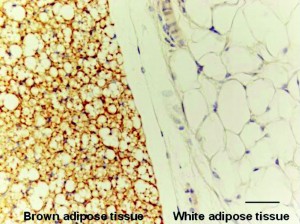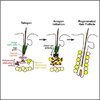- Reaction score
- 64
There is a hypothesis that hairloss (or better say hairfreeze) caused by surrounding dermal white adipose tissue (dwat) issues.
Possible adipose tissue issues are:
- fibrosis of adipose tissue: adipocyte-myofibroblasts transitions (amt), check the illustration
- regression of adipose tissue: over-lipolysis of adipocytes
- under-production of adiponectin

What do you think about this?
Do you know any scientists who work on dwat-related therapies?
PS.
more details and references to scientific sources could could be found on reddit:
Possible adipose tissue issues are:
- fibrosis of adipose tissue: adipocyte-myofibroblasts transitions (amt), check the illustration
- regression of adipose tissue: over-lipolysis of adipocytes
- under-production of adiponectin
What do you think about this?
Do you know any scientists who work on dwat-related therapies?
PS.
more details and references to scientific sources could could be found on reddit:


